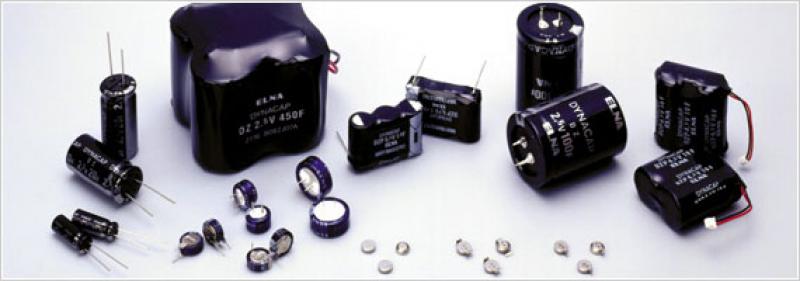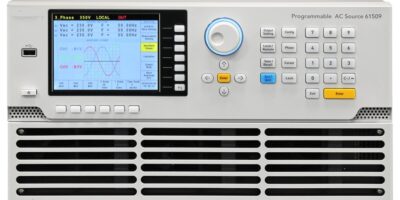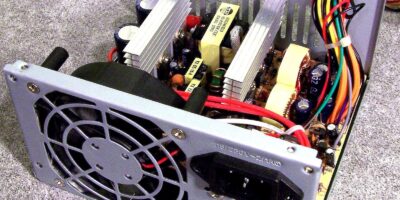Electric Double-layer Capacitors (EDLCs), also known as supercapacitors or ultracapacitors, have emerged as a vital component in various industries due to their high capacitance, rapid charge and discharge rates, and long cycle life. In this comprehensive overview, we will delve deep into the Electric Double-layer Capacitor (EDLC) Market, covering its historical developments, current trends, product portfolio, production modes and processes, restraints, and the methodology of data triangulation used for market analysis.
Historical Developments:
The history of EDLCs dates back to the 1950s when researchers first observed the double-layer capacitance phenomenon at the interface between a solid electrode and an electrolyte solution. However, it was not until the late 1970s and early 1980s that significant advancements were made in EDLC technology, leading to the commercialization of supercapacitors by companies like NEC and Maxwell Technologies.
In the following decades, EDLCs underwent continuous improvement in terms of electrode materials, electrolyte formulations, and manufacturing processes. This led to enhancements in energy density, power density, and overall performance, making supercapacitors viable for a wide range of applications, including automotive, renewable energy, consumer electronics, and industrial machinery.
Trends:
Several trends have shaped the EDLC market in recent years:
- Increasing Demand for Energy Storage Solutions: With the growing emphasis on renewable energy integration and electrification of transportation, there is a rising demand for high-performance energy storage solutions. EDLCs offer fast charging and discharging capabilities, making them ideal for applications requiring rapid energy delivery and recovery.
- Advancements in Electrode Materials: Research and development efforts have focused on improving electrode materials to enhance the energy density and power density of EDLCs. Carbon-based materials such as activated carbon, graphene, and carbon nanotubes are commonly used due to their high surface area and conductivity.
- Integration into Automotive Systems: EDLCs are increasingly being integrated into automotive systems for applications such as regenerative braking, start-stop systems, and hybrid/electric vehicle powertrains. Supercapacitors provide high power density and can withstand frequent charge-discharge cycles, making them suitable for these demanding automotive applications.
- Emergence of Hybrid Energy Storage Systems: Hybrid energy storage systems combining EDLCs with lithium-ion batteries or other energy storage technologies are gaining traction. These systems leverage the strengths of each technology to achieve optimal performance, efficiency, and longevity.
- Focus on Environmental Sustainability: There is a growing focus on developing environmentally sustainable EDLCs by using eco-friendly electrode materials and electrolytes. Additionally, efforts are underway to improve the recyclability and end-of-life management of supercapacitors to minimize their environmental impact.
Product Portfolio:
The product portfolio of EDLCs encompasses a wide range of capacitance values, voltage ratings, form factors, and application-specific designs. Capacitance values can range from a few farads to several thousand farads, catering to diverse energy storage requirements. Voltage ratings typically range from a few volts to hundreds of volts, enabling compatibility with various electrical systems.
EDLCs are available in different form factors, including cylindrical, prismatic, and coin-cell configurations, to accommodate different installation requirements. Application-specific designs, such as modules with integrated management systems and hybrid energy storage systems, are also offered to meet the specific needs of different industries.
Production Mode & Process:
The production of EDLCs involves several key steps, including electrode preparation, electrolyte formulation, assembly, and testing. The electrode material, usually a carbon-based material like activated carbon, is prepared by methods such as chemical activation, physical activation, or templating.
The electrolyte solution, typically consisting of an organic solvent and a conductive salt, is formulated to achieve the desired electrical properties and performance characteristics. The electrodes and electrolyte are then assembled into a cell configuration, with separator materials used to prevent short circuits.
The assembled cells may undergo additional processing steps such as formation cycling to stabilize performance and ensure uniformity. Quality control and testing procedures are implemented throughout the production process to verify performance specifications and reliability.
Restraints:
Despite the numerous advantages of EDLCs, several factors pose restraints on market growth:
- Limited Energy Density: Compared to batteries, EDLCs generally have lower energy density, limiting their suitability for applications requiring high energy storage capacity. Efforts to improve energy density without compromising other performance metrics are ongoing but remain a challenge.
- Cost Considerations: The cost of EDLCs, particularly high-capacity devices, can be relatively high compared to traditional capacitors and batteries. This cost factor may deter widespread adoption, especially in cost-sensitive applications.
- Temperature Sensitivity: EDLCs are sensitive to temperature variations, with performance degradation observed at extreme temperatures. This limits their applicability in environments with wide temperature ranges or where temperature control is challenging.
- Competition from Batteries: In some applications, especially those requiring high energy density and longer discharge times, batteries such as lithium-ion batteries may offer a more suitable solution than EDLCs. Competition from established battery technologies can hinder market penetration for supercapacitors.
- Safety Concerns: While EDLCs are generally considered safe, improper handling or manufacturing defects can lead to safety issues such as overheating, short circuits, and electrolyte leakage. Ensuring robust safety features and adherence to industry standards is crucial to mitigating these risks.
Receive the FREE Sample Report of Electric Double-layer Capacitor (EDLC) Market Research Insights @ https://stringentdatalytics.com/sample-request/electric-double-layer-capacitor-(edlc)-market/11050/
Market Segmentations:
Global Electric Double-layer Capacitor (EDLC) Market: By Company
• Maxwell
• Panasonic
• Ningbo CRRC New Energy Technology
• LS Mtron
• Nippon Chemi-Con
• AVX
• ELNA
• Supreme Power Solutions
• KEMET
• Samwha
• Jianghai Capacitor
• Man Yue Technology Holdings Limited (Samxon)
• Ioxus
• Jinzhou Kaimei Power
• Beijing HCC Energy
• Skeleton Technologies
• VINATech
• Cornell Dubilier Electronics
• Yunasko
• Shanghai Aowei Technology
• Shandong Goldencell Electronics Technology
• CAP-XX
Global Electric Double-layer Capacitor (EDLC) Market: By Type
• Radial Type
• Cylindricality Type
• Button Type
• Square Type
• Pouch Type
Global Electric Double-layer Capacitor (EDLC) Market: By Application
• Consumer Electronics
• Transportation
• Electricity
• Military and Aerospace
• Others
Regional Analysis of Global Electric Double-layer Capacitor (EDLC) Market
All the regional segmentation has been studied based on recent and future trends, and the market is forecasted throughout the prediction period. The countries covered in the regional analysis of the Global Electric Double-layer Capacitor (EDLC) market report are U.S., Canada, and Mexico in North America, Germany, France, U.K., Russia, Italy, Spain, Turkey, Netherlands, Switzerland, Belgium, and Rest of Europe in Europe, Singapore, Malaysia, Australia, Thailand, Indonesia, Philippines, China, Japan, India, South Korea, Rest of Asia-Pacific (APAC) in the Asia-Pacific (APAC), Saudi Arabia, U.A.E, South Africa, Egypt, Israel, Rest of Middle East and Africa (MEA) as a part of Middle East and Africa (MEA), and Argentina, Brazil, and Rest of South America as part of South America.
Click to Purchase Electric Double-layer Capacitor (EDLC) Market Research Report @ https://stringentdatalytics.com/purchase/electric-double-layer-capacitor-(edlc)-market/11050/
Data Triangulation:
Data triangulation is a research methodology used to validate and corroborate findings by cross-referencing information from multiple sources. In the context of the EDLC market, data triangulation involves collecting and analyzing data from various sources such as market research reports, industry publications, company websites, government databases, and academic journals.
By triangulating data from diverse sources, researchers can enhance the reliability and credibility of their findings, minimize bias, and gain a more comprehensive understanding of market dynamics. This approach allows for a more robust analysis of market trends, growth drivers, challenges, and opportunities, ultimately providing stakeholders with actionable insights for informed decision-making.
About Stringent Datalytics
Stringent Datalytics offers both custom and syndicated market research reports. Custom market research reports are tailored to a specific client’s needs and requirements. These reports provide unique insights into a particular industry or market segment and can help businesses make informed decisions about their strategies and operations.
Syndicated market research reports, on the other hand, are pre-existing reports that are available for purchase by multiple clients. These reports are often produced on a regular basis, such as annually or quarterly, and cover a broad range of industries and market segments. Syndicated reports provide clients with insights into industry trends, market sizes, and competitive landscapes. By offering both custom and syndicated reports, Stringent Datalytics can provide clients with a range of market research solutions that can be customized to their specific needs.
Reach US
Stringent Datalytics
+1 346 666 6655
Social Channels:
Linkedin | Facebook | Twitter | YouTube




Leave a Reply